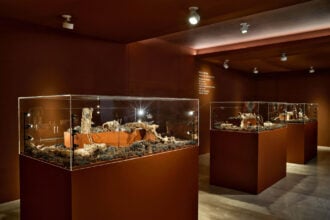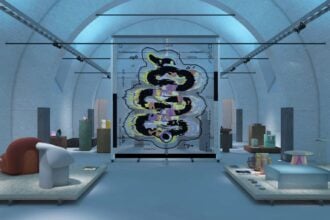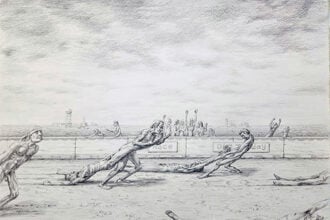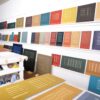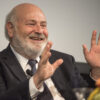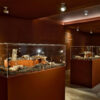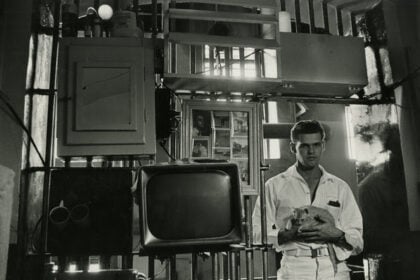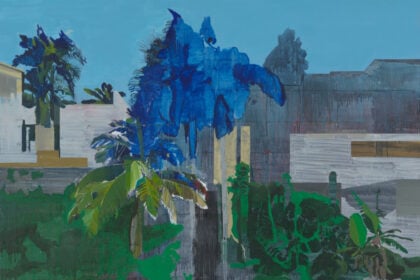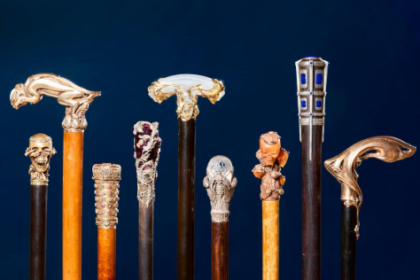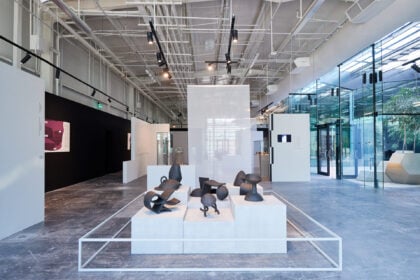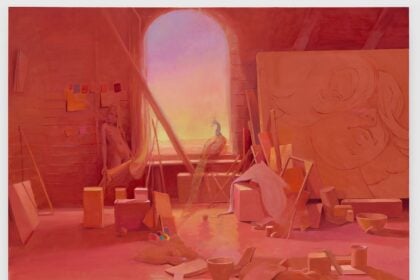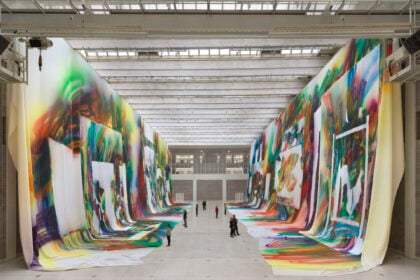New York – Pace is pleased to present an exhibition of work by Josef Koudelka at its 540 West 25th Street gallery in New York. On view from March 29 to April 27, this will be the artist’s first solo show in New York in nearly a decade, bringing together six large-scale panoramas he created between 1987 and 2010 as part of a project titled Industries. The exhibition will also include a display of small-scale, accordion-style maquettes of Mission Photographique Transmanche, Beyrouth Centre Ville, The Black Triangle, Reconnaissance-Wales, Lime Stone, Teatro del Tempo, Camargue, Piemonte, WALL, Ruins, and Solac. This presentation at Pace coincides with the release of Josef Koudelka: Next, the definitive and only authorized biography of the artist, published by Aperture. The book will be available for purchase on-site at the gallery during the run of the exhibition.
Born in Czechoslovakia in 1938, Koudelka trained as an aeronautical engineer but began photographing Romani people—their everyday lives, their struggles, and their traditions—mainly in central European countries in the early 1960s, making a full-time commitment to photography later that decade. In 1968, he photographed the Soviet invasion of Prague, publishing his works under the initials P.P. (Prague photographer). Koudelka, who was anonymously awarded the Overseas Press Club’s Robert Capa Gold Medal for those photographs, left Czechoslovakia seeking political asylum in England, with assistance from the Magnum Photos cooperative, in 1970. His first book, Gypsies, was released by Aperture in 1975, and he has since produced more than a dozen publications of his work.
Koudelka’s interest in the social and political dimensions of photography, evident in his earliest bodies of work, would endure through the following decades. He has been working in large-format, panoramic photography since 1986, capturing images of changing landscapes around the world—places that have been reshaped, altered, and in some cases devastated by the effects of industry, time, and war.
Adopting a semi-nomadic lifestyle in pursuit of documenting these haunting, elegiac scenes, Koudelka produced deeply interconnected bodies of work that speak to the ways that the weight of history lingers within the natural world. During the late 1980s and early 1990s, the artist photographed the Berlin Wall; the streets of Beirut immediately following the Lebanese Civil War; outsized industrialization and pollution in the Black Triangle, a border region between Germany, Poland, and the Czech Republic; the Auschwitz concentration camp in Poland; and other places forever transformed by sociopolitical turmoil, violence, and environmental destruction.
Also among Koudelka’s famous panoramic projects are his Ruins series, for which he photographed more than 200 archeological sites across Greece, Italy, Libya, Syria, and other countries between 1991 and 2015, and his body of work on Israel’s West Bank Wall, which he created over the course of seven trips to Israel and Palestine between 2008 and 2012.
“The face of the wounded landscape—it is marked by trouble, by suffering,” Koudelka tells his biographer, Melissa Harris. “It is the same as the face of people who have a difficult life. I am interested in real people, real faces … In this wounded landscape, I admire the fight for survival … Nature is stronger than man.”
The artist’s upcoming exhibition with Pace in New York, his first solo show in the city since 2015, will be presented on the gallery’s seventh floor against sweeping views of the Chelsea skyline. Measuring some nine feet in width, each of the six monumental panoramas that Koudelka has selected for the exhibition—captured across the United States, France, Germany, Italy, Azerbaijan, and Israel between 1987 and 2010—tells a different story.
Josef Koudelka (b. 1938) began his career as an aeronautical engineer in Prague and Bratislava, and began photographing stage productions for theater magazines. After documenting gypsy culture in Romania, Slovakia, and Western Europe, he committed to photography full-time in 1967. The following year, Koudelka photographed the Soviet invasion of Prague, publishing his images under the initials “P. P.” (Prague Photographer) for fear of reprisal. He was anonymously awarded the Overseas Press Club’s Robert Capa Gold Medal for this work in 1969.
Since 1986, Koudelka has embraced and employed the expansive compositional format of the panorama. From his commissioned investigation of the French-English region impacted by the Channel Tunnel for La Mission Photographique Transmanche project, to his exploration of the political climate in Israel and Palestine, and his recent documentation of the persistence of classicism along the Mediterranean rim, Koudelka has continuously used panoramic cameras to showcase terrains that have been significantly shaped, altered, and even devastated by the effects of industry, time, and territorial conflict.
Pace is a leading international art gallery representing some of the most influential contemporary artists and estates from the past century, holding decades-long relationships with Alexander Calder, Jean Dubuffet, Barbara Hepworth, Agnes Martin, Louise Nevelson, and Mark Rothko. Pace enjoys a unique U.S. heritage spanning East and West coasts through its early support of artists central to the Abstract Expressionist and Light and Space movements.
Since its founding by Arne Glimcher in 1960, Pace has developed a distinguished legacy as an artist-first gallery that mounts seminal historical and contemporary exhibitions. Under the current leadership of CEO Marc Glimcher, Pace continues to support its artists and share their visionary work with audiences worldwide by remaining at the forefront of innovation. Now in its seventh decade, the gallery advances its mission through a robust global program— comprising exhibitions, artist projects, public installations, institutional collaborations, performances, and interdisciplinary projects. Pace has a legacy in art bookmaking and has published over five hundred titles in close collaboration with artists, with a focus on original scholarship and on introducing new voices to the art historical canon.
Today, Pace has seven locations worldwide, including European footholds in London and Geneva as well as Berlin, where the gallery established an office in 2023. Pace maintains two galleries in New York—its headquarters at 540 West 25th Street, which welcomed almost 120,000 visitors and programmed 20 shows in its first six months, and an adjacent 8,000 sq. ft. exhibition space at 510 West 25th Street. Pace’s long and pioneering history in California includes a gallery in Palo Alto, which was open from 2016 to 2022. Pace’s engagement with Silicon Valley’s technology industry has had a lasting impact on the gallery at a global level, accelerating its initiatives connecting art and technology as well as its work with experiential artists. Pace consolidated its West Coast activity through its flagship in Los Angeles, which opened in 2022. Pace was one of the first international galleries to establish outposts in Asia, where it operates permanent gallery spaces in Hong Kong and Seoul, along with an office and viewing room in Beijing. In spring 2024, Pace will open its first gallery space in Japan in Tokyo’s new Azabudai Hills development.


